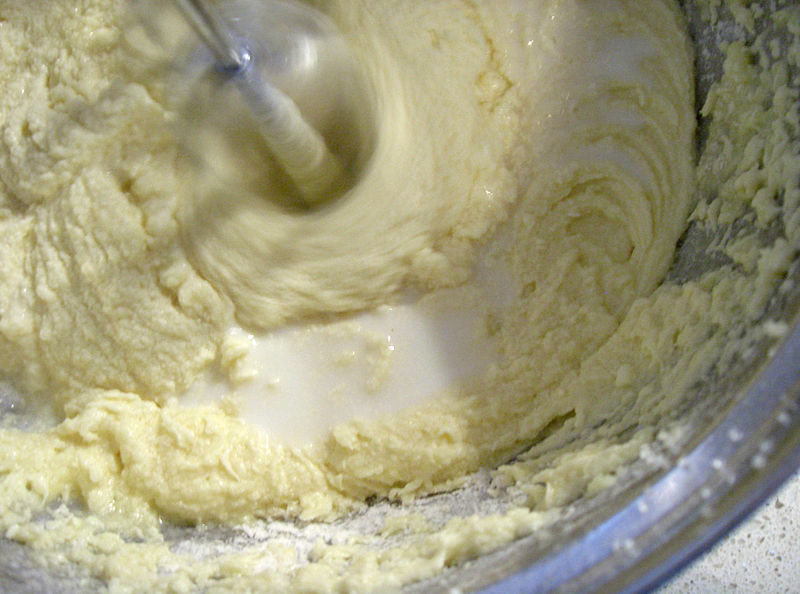- Get link
- X
- Other Apps
- Get link
- X
- Other Apps
PREPARATION OF FOOD INGREDIENTS - Food Processing & Mixing of Foods
Solid foods which are to be mixed have to be reduced into sizes which will allow them to combine readily. A certain amount of preparation is thus necessary.
Washing This is done to remove superficial dirt. Wash vegetables, meat and fish in cold water before any preparation is done. If they are soaked for a long period or washed after cutting there is greater loss of water soluble minerals and vitamins.
Peeling and scraping Spoilt, soiled and inedible portions are removed. Skins of vegetables like potatoes, carrots, etc., or of fruits, are removed by either peeling or scraping. When peeling, remove as little of the fleshy part as possible.
Paring Remove surface layers by cutting as in paring an apple. A circular motion is used.
Cutting Reducing to small parts by means of a knife or scissors, When the reduction is done by a chopping knife or a food chopper it known as chopping. Cutting into even-sized cubes is called dicing. Cutting into very fine pieces is mincing. Shredding is cutting into fine long pieces with a knife or shredder. Slicing is also cutting into thin long pieces, but these are not as fine as in shredding.
Grating Reducing to fine particles by rubbing over a rough, sharp surface.
Grinding Reducing to small fragments by crushing in a mill, a grinding stone or an osterizer.
Mashing This is a method of breaking up soft foods such as cooked potatoes or vegetables.
Sieving Passing through a mesh to remove impurities, to break down to even portions, or to enclose air.
Milling used for cereals, to remove husks, etc.
Steeping Extracting colouring and flavouring by allowing ingredients to stand in water generally at a temperature just below boiling point.
Centrifuging Promotion of separation through the application of a whirling force, e.g., separating cream from milk.
Emulsification Blending one liquid with another in which it is insoluble, e.g., oil and egg yolk in mayonnaise.
Evaporation Removal of excess moisture by heating.
Homogenization Subdivision of large drops into smaller ones by forcing them through a small opening under great pressure, e.g., fat in cream.
Methods of mixing foods
Beating This method can be used with thin mixtures or liquids. This should be done carefully with the aim of enclosing air. This term is used synonymously with whipping. e.g., beating of eggs.
Blending Mixing two or more ingredients thoroughly.
Cutting in Usually the incorporation of fat in flour and other sifted ingredients with a knife. This method produces a relatively coarse division of the fat and does not result in blending. e.g., cutting fat into pastry mixture.
Creaming Softening of fat by friction with a wooden spoon, generally followed by the gradual incorporation of sugar as in cake making.
Folding Mixing by a careful lifting and dropping motion. The edge of the spoon is used and the mixture is lifted, turned completely and gently replaced. All the movements in this method, though deft, should be so gentle that the different ingredients are almost coaxed together.
Kneading Manipulating by alternating pressure with folding and stretching. The food is pressed with the knuckles. The dough is brought from the outside of the bowl or basin to the centre and at the same time the bowl is moved so that a different section is kneaded each time. This ensures a thorough distribution of ingredients. eg., bread dough, chapati dough, etc.
Pressing This is done to shape foods like cutlets and sometimes as a method of subdivision to separate liquids from solids by weights or mechanical pressure, as for paneer.
Rubbing in Rubbing fat into flour using the tips of the fingers and thumb and lifting the hand out of the basin as in the case of shortcrust pastry. Rub until the mixture looks like breadcrumbs.
Rolling in Rolling butter or fat in a soft dough, e.g., puff pastry.
Stirring Mixing foods with a suitable tool such as a spoon by a circular motion in contact with the pan. Generally this is a gentle movement but is changed to suit different dishes, as when used to prevent sticking or burning in halwas and toffees. If used too vigorously, it tends to drive out air or other gas previously enclosed as raising agent.
blending
creaming
cutting of food
evaporation
Food Processing
grating
grinding
Hotel managment notes
kneading
mashing
Mixing of Foods
peeling
PREPARATION OF INGREDIENTS
sieving
stirring
- Get link
- X
- Other Apps









Comments